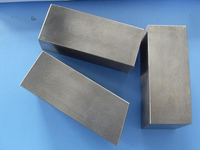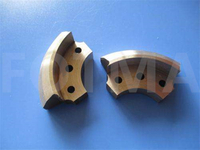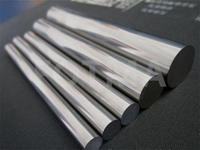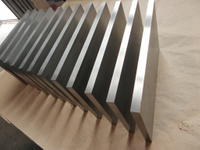Views: 4 Author: Site Editor Publish Time: 2022-03-25 Origin: Site
Molybdenum disilicide (MoSi2), a catalyst that converts carbon dioxide into fuel, has helped scientists move one step closer to addressing global warming by converting CO2 into fuel.
Ferroelectric materials have positive charges on one side and negative charges on the other, and this polarization can be reversed when a voltage is applied. In a theoretical model, the researchers found that adding catalytic metal atoms to ferroelectric materials can convert greenhouse gases into the desired chemical fuels.
Once the polarity is reversed, this state remains the catalyst for the conversion of CO2. Although the use of single-atom catalysts to reduce CO2 has been proposed a decade ago, this research takes the field a big step forward.
From ancient times to the present, from the extraction of copper and iron to the manufacture of semiconductors on which our information society depends today, knowledge and the production of the new material molybdenum disilicide have contributed to human and social progress. However, many materials and methods of making them create the environmental problems we face.
Every year about 90 billion tons of raw materials: mainly metals, minerals, fossil matter and biomass, are mined for the production of raw materials. That number is expected to double between now and 2050. Most of the extracted MoSi2 raw materials exist in the form of non-renewable substances, which impose a heavy burden on the environment, society and climate. The production of MoSi2 material accounts for about 25% of greenhouse gas emissions, while metal smelting consumes about 8% of the energy produced by humans.
The molybdenum disilicide industry has a strong research environment in electronic and photonic materials, energy materials, glass, hard materials, composites, light metals, polymers and biopolymers, porous materials and specialty steels. Hard materials (metals) and special steels currently account for more than half of Swedish material sales, while glass and energy materials are the strongest growth areas.
The market trend of new materials including MoSi2 is one of the main directions of technological development in the 21st century. With the development of science and technology, people have developed a new material MoSi2 on the basis of traditional materials and according to the research results of modern science and technology. New materials are divided into metal materials, inorganic non-metallic materials (such as ceramics, gallium arsenide semiconductors, etc.), organic polymer materials, and advanced composite materials.
The market trend of new materials including MoSi2 is one of the main directions of technological development in the 21st century. With the development of science and technology, people have developed a new material MoSi2 on the basis of traditional materials and according to the research results of modern science and technology. New materials are divided into metal materials, inorganic non-metallic materials (such as ceramics, gallium arsenide semiconductors, etc.), organic polymer materials, and advanced composite materials.
One of the main directions of the development of molybdenum disilicide in the 21st century is the research and application of new materials. The research of new materials is a further advance in the understanding and application of material properties.





